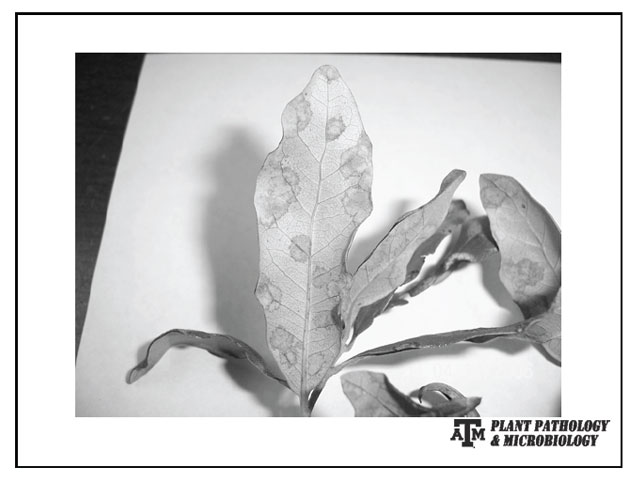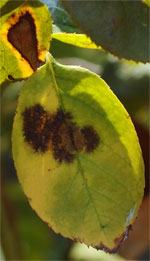Black Spot of Roses
Download Rose Blackspot PDF (PLPA-112)
Black Spot is the most important disease of roses, worldwide. Left unchecked it can defoliate and even kill susceptible rose varieties. In its initial stages, it is seen as small, dry, reddish-brown spots with a feathery margin. Slowly, these lesions enlarge and develop a darker black color while leaf tissue in the region of the spot begins to yellow. Eventually the entire leaf will turn yellow and fall off of the rose bush. Purple-red blotches may develop on the current years canes and in extreme cases may kill the cane. Spores of the pathogen, Diplocarpon rosea, are produced in the black spots in as short as 11 days after infection and where slashing water spreads them. Spores require at least 7 hours of moisture on the leaf surface to germinate and infect a leaf at an optimum temperature of 65° Fahrenheit. The pathogen survives in these cane lesions and on infected leaves that have fallen off the bush.
Anything that reduces the length of time the leaves are wet will decrease the severity of  this disease. These include avoiding overhead watering, watering during the late morning when temperatures are increasing, and spacing plants to encourage good air movement. The practice of syringing leaves to reduce spider mites should be avoided or at least delayed until weather conditions will encourage quick drying of the leaves. Removing dead leaves and pruning out infected canes will reduce the amount of inoculum that survives the winter. There are several varieties of rose that show some resistance to black spot. You can contact your local county AgriLife Extension agent for more information about rose varieties and their disease resistance.
this disease. These include avoiding overhead watering, watering during the late morning when temperatures are increasing, and spacing plants to encourage good air movement. The practice of syringing leaves to reduce spider mites should be avoided or at least delayed until weather conditions will encourage quick drying of the leaves. Removing dead leaves and pruning out infected canes will reduce the amount of inoculum that survives the winter. There are several varieties of rose that show some resistance to black spot. You can contact your local county AgriLife Extension agent for more information about rose varieties and their disease resistance.
There are several fungicides that are effective at controlling disease. Fungicides containing cyproconazole, triforine, or chlorothalonil among others provide good control. Additionally, there are some “organic” fungicides that can provide decent control of this disease such as products containing neem oil or potassium bicarbonate. As with any chemical, read and follow instruction on label for effective utilization of the fungicide.
